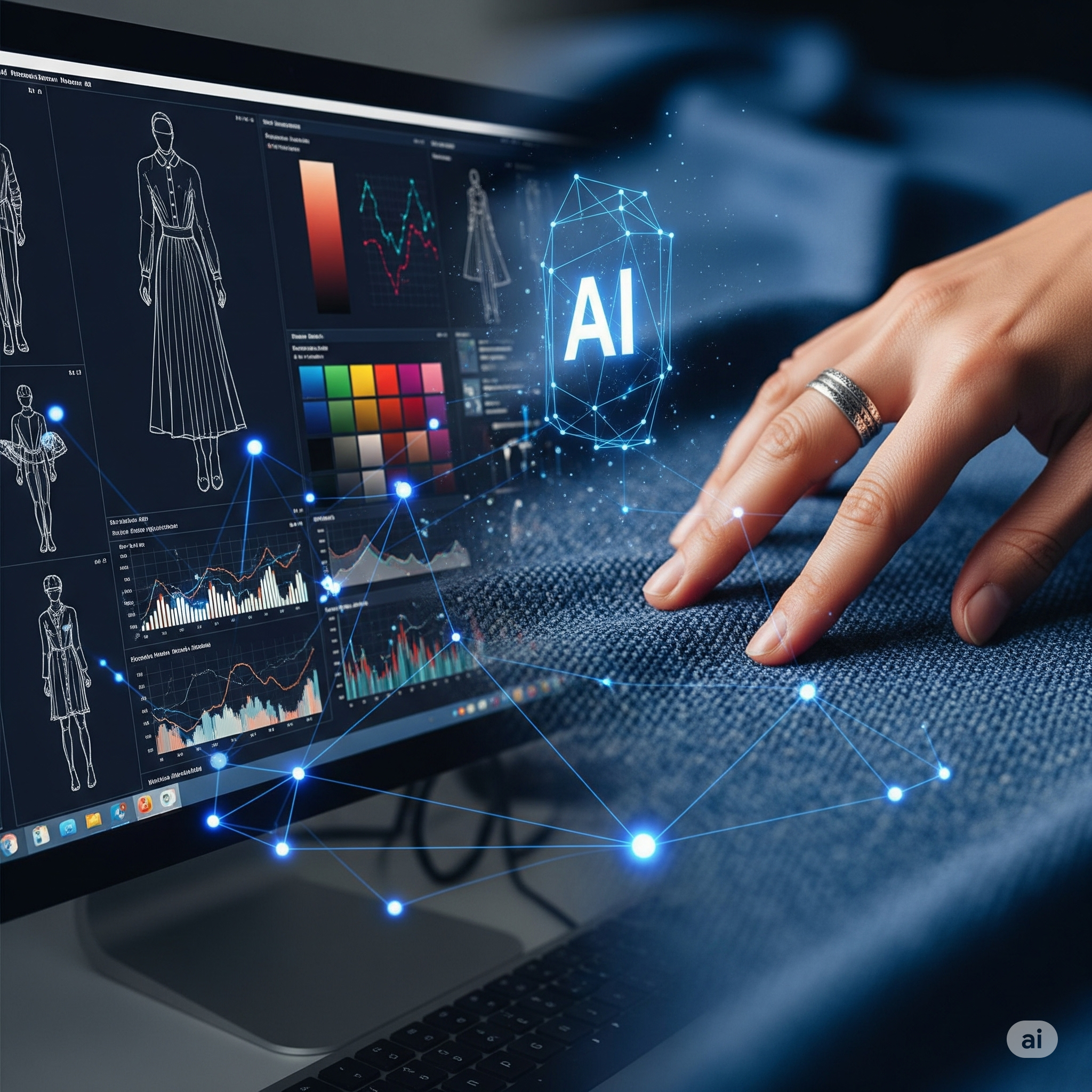The fashion industry, long revered for its artistry and intuition, is experiencing a profound transformation fueled by the power of Artificial Intelligence. From predicting the next must-have trends to streamlining design processes and even personalizing the shopping experience, AI in fashion design is rapidly evolving from a futuristic concept to a tangible reality. This technological wave is not just about automation; it’s about empowering designers, understanding consumers better, and ultimately shaping the future of what we wear.
This in-depth exploration will delve into the multifaceted impact of AI on the fashion world, examining how fashion trend AI is revolutionizing forecasting, how AI in fashion design is assisting in the creative process, and the exciting possibilities that lie ahead. We’ll also uncover real-world applications and provide insights into how businesses can leverage these intelligent tools to stay ahead in this dynamic industry.
Decoding the Runway: The Rise of Fashion Trend AI
Predicting which styles will resonate with consumers is the holy grail of the fashion industry. Traditionally, trend forecasting relied on human intuition, analysis of cultural shifts, and observation of runway shows. While these elements remain important, fashion trend AI offers a powerful new dimension to this process, leveraging vast amounts of data to identify emerging patterns and anticipate future demands with remarkable accuracy.
Fashion trend AI algorithms analyze a diverse range of data sources, including social media conversations, online search queries, e-commerce sales data, fashion news articles, and even visual data from street style and runway collections. By identifying correlations and anomalies within this massive dataset, AI can pinpoint emerging trends in colors, fabrics, silhouettes, and styles long before they become mainstream. This allows fashion brands and retailers to make more informed decisions about their collections, optimize inventory, and reduce the risk of producing unpopular items.
Furthermore, fashion trend AI can segment trends by demographic, geographic location, and consumer preferences, providing a granular understanding of what different groups are likely to desire. This level of precision enables brands to tailor their offerings to specific target audiences, leading to increased sales and customer satisfaction.
The Intelligent Muse: How AI is Assisting in Fashion Design
Beyond trend forecasting, AI in fashion design is also becoming an invaluable tool for the creative process itself. AI-powered platforms can assist designers in various stages, from generating initial ideas to optimizing garment construction and even personalizing designs for individual customers.
Idea Generation and Inspiration
Design inspiration can sometimes be elusive. AI in fashion design tools can help spark creativity by analyzing existing designs, historical fashion trends, and even artistic movements to generate novel concepts and aesthetic combinations. By inputting specific parameters, such as desired style, target audience, or material preferences, designers can receive a multitude of AI-generated design suggestions, serving as a starting point for their own creative exploration.
Streamlining the Design Process
The traditional fashion design process often involves time-consuming tasks like sketching, pattern making, and creating prototypes. AI in fashion design can automate and optimize many of these steps. For instance, AI-powered software can generate digital sketches and 3D models based on设计师’s initial ideas, allowing for rapid visualization and iteration. AI algorithms can also analyze garment patterns to optimize fabric usage, minimize waste, and improve fit.
Personalized and Sustainable Design
AI in fashion design also opens up exciting possibilities for personalization and sustainability. By analyzing individual customer data, such as body measurements, style preferences, and purchase history, AI can generate customized designs that perfectly fit and cater to their unique tastes. This not only enhances customer satisfaction but also reduces the likelihood of returns and unsold inventory. Furthermore, AI can be used to optimize material selection and production processes for greater sustainability, minimizing environmental impact.
Case Studies: AI Shaping the Fashion Landscape
The integration of AI in fashion design and trend forecasting is no longer theoretical. Numerous companies are already leveraging these technologies to gain a competitive edge.
Case Study 1: Stitch Fix – Personalized Styling Through AI
Stitch Fix, an online personal styling service, heavily relies on AI algorithms to understand customer preferences and curate personalized clothing recommendations. Their AI analyzes data from customer style quizzes, feedback on past items, and even visual preferences to predict which garments will resonate with each individual. This sophisticated application of fashion trend AI and personalized data has been instrumental in Stitch Fix’s success, demonstrating how AI can drive customer satisfaction and loyalty in the fashion retail sector. According to their internal data, AI-powered recommendations have significantly improved customer retention and reduced return rates.
Case Study 2: Zara – Agile Supply Chain and Trend Responsiveness
Zara, a global fashion giant, utilizes data analytics and AI to closely monitor sales trends and customer feedback in real-time. This allows them to quickly identify emerging popular styles and rapidly adjust their production and supply chain to meet demand. While not solely relying on generative AI in fashion design, their use of AI-powered data analysis enables them to be incredibly agile and responsive to the latest fashion trend AI signals, minimizing unsold stock and maximizing profitability. Their ability to quickly translate real-time data into new product offerings is a testament to the power of AI-driven business intelligence in fashion.
Navigating the AI Frontier: Practical Tips for Fashion Businesses
For fashion businesses looking to embrace the power of AI in fashion design and trend forecasting, here are some beginner-friendly tips:
- Identify Key Pain Points: Determine the areas in your business where AI could have the most significant impact, whether it’s improving trend prediction accuracy, streamlining design processes, or personalizing customer experiences.
- Start with Data: AI thrives on data. Ensure you have systems in place to collect and analyze relevant data, such as sales figures, customer feedback, social media activity, and website analytics.
- Explore Available AI Tools: Research and experiment with different AI-powered platforms and software designed for the fashion industry. Many offer free trials or introductory plans to get started.
- Focus on Integration: Consider how AI tools can be integrated into your existing workflows and processes. The goal is to augment human capabilities, not replace them entirely.
- Invest in Training: Ensure your team has the necessary skills and knowledge to effectively utilize AI tools and interpret the insights they provide.
- Iterate and Adapt: The field of AI in fashion design is constantly evolving. Be prepared to adapt your strategies and embrace new technologies as they emerge.
Toolkits for Designers: Top AI Tools Transforming Fashion
Mastering AI in Fashion Design—Recommended Tools
- The New Black
- Description: AI clothing design generator that produces instant, unique looks. Used by brands and independents for rapid prototyping and originality.
- Visit The New Black
- CALA
- Description: An all-in-one platform integrating AI with design, production, and logistics for fashion brands of all sizes.
- Visit CALA
- YesPlz
- Description: AI-driven product discovery and personalization platform that offers interactive, visual shopping tailored to user preferences.
- Visit YesPlz
- Heuritech
- Description: AI-powered insights to forecast trends, leveraging real-time social data and image recognition.
- Visit Heuritech
- Tableau
- Description: Business intelligence platform to blend, visualize, and draw insights from large fashion trend datasets.
- Visit Tableau
- MonkeyLearn
- Description: No-code AI platform for text analysis and sentiment extraction—great for trend prediction from reviews or social chatter.
- Visit MonkeyLearn
- Power BI
- Description: End-to-end analytics suite by Microsoft, perfect for visualizing sales, inventory, and trend data.
- Visit Power BI
- ChatGPT
- Description: OpenAI’s GPT model allows brainstorming, content creation, and even the rapid prototyping of creative campaigns.
- Explore ChatGPT
Empowering Creativity: The Future of Fashion with AI
The integration of AI in fashion design and trend forecasting is not meant to diminish the role of human creativity and intuition. Instead, it serves as a powerful tool to augment designers’ abilities, provide valuable insights, and unlock new possibilities. By freeing up designers from repetitive tasks and providing data-driven inspiration, AI allows them to focus on the core elements of creativity: concept development, aesthetic innovation, and emotional connection with consumers.
The future of fashion is likely to be a collaborative landscape where human ingenuity and artificial intelligence work in synergy. Fashion trend AI will provide the data-driven foundation for informed decision-making, while AI in fashion design will empower creators to bring their visions to life with greater efficiency and personalization. As these technologies continue to evolve, we can expect to see even more exciting and innovative developments that will shape the way we design, produce, and consume fashion for years to come.
The Future of AI Photography Tools: Enhancing Images and Workflow
The Future of AI Video Production: Streamlining Editing and Special Effects



